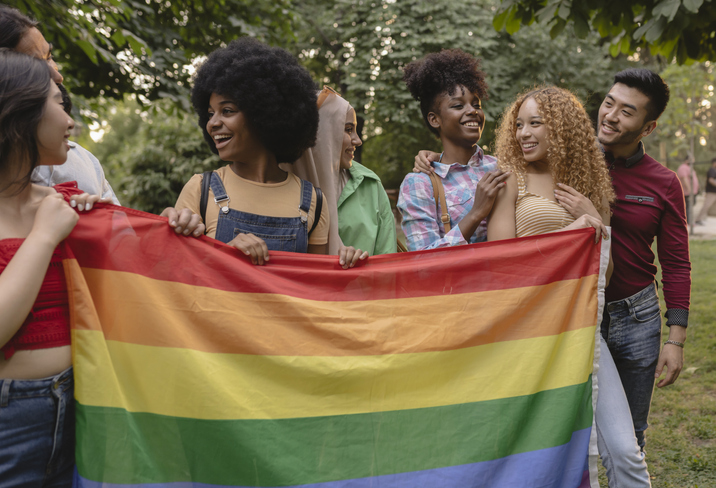Stop Erasing Asexuality As A Sexual Identif, It’s Real AF
Stop Erasing Asexuality As A Sexual Identity, It’s Real AF - Page 3
Share the post
Share this link via
Or copy link

Source: Hiraman / Getty
Bisexuality, pansexuality, demisexuality– these are some of the non-monogamous, non-hetero-normative sexualities you may have heard of.
In fact, MADAMENOIRE explored some sexualities you might not know about before. But asexuality isn’t discussed as much, even though asexuals make up roughly one percent of the population, according to The Asexual Visibility & Education Network. That might sound like a small amount of people, but it accounts for about 78 million individuals. That’s 78 million people who, as far as sexuality goes, have become invisible.
There is a chance you know someone who is asexual, and just because they won’t have stories of hookups or sexual adventures to share doesn’t mean that they don’t seek to be heard and understood. It’s time to better embrace and understand our asexual friends. Here are some things to know about asexuality so you can better relate to asexual individuals in your life.
What Does Asexuality Mean?

Source: Jose carlos Cerdeno / Getty
First and foremost, asexuals are a part of the LGBTQ+ community. That surprises some people because many believe that being asexual means never having sex or experiencing any sexual feelings. This is only sometimes true. Asexual individuals identify as having anywhere from zero to little desire for sexual encounters, as well as zero to little sexual attraction to others. Sometimes, under specific conditions, asexual individuals might experience sexual attraction, but they primarily identify with the experience of not feeling sexual attraction or desires.
Love MadameNoire? Get more! Join the MadameNoire Newsletter
We care about your data. See our privacy policy.
Keeping in mind that sexuality is a spectrum, asexuality simply gives people who experience low or no sexual attraction/desire a label they can use to best describe their sexuality. However, in the same way bisexual individuals might lean more towards heterosexuality or homosexuality, an asexual person can land on various points of the sexuality spectrum. In fact, that’s why the term “graysexual” exists; it defines asexuals who sometimes experience sexual desire.
Asexual individuals are occasionally called demisexuals, because for some, an emotional connection is required for sexual attraction – as is the case with demisexuals. But, that doesn’t have to be the case. Asexuality and demisexuality are not interchangeable, but they can sometimes share similarities.
Myths About Asexuality

Source: Johner Images / Getty
It’s A Choice
Asexuality is sometimes mistaken for celibacy or abstinence. But, celibacy and abstinence are a choice that anyone can make, regardless of sexual orientation. Asexuality is a sexual orientation, and so it is not a choice. Celibate and abstinent individuals do experience the desire to have sex but do not act on that desire. Asexual individuals do not experience that desire in the first place (most of the time).
It’s A Symptom
Another misunderstanding about asexuality is that it is a symptom of a mental illness or personality disorder. Much of the psychology community still struggles to grasp the idea that a person could be emotionally and mentally well and simply not experience sexual desire. In many cases, asexual individuals deal with mental health professionals who suggest they will discover sexual feelings, once they’ve worked through certain emotional or mental problems. However, this idea can be insulting and dismissive to asexuals. Asexuality is a sexual orientation. Suggesting that any other sexual orientation were a “symptom” of a mental illness would be extremely problematic and discriminatory.
Asexuals Don’t Have Feelings
Asexuality only pertains to one’s ability to feel sexual attraction and have sexual desires. It has nothing to do with their ability feel love, crave closeness, and even have romantic feelings. Many asexuals still want to cuddle, hold hands and experience other forms of physical, intimate touch. Asexuals can and do have romantic relationships that go far beyond a friendship, but just don’t include sex (or at least not often).
How To Know If You Are Asexual

Source: StockRocket / Getty
If you are wondering whether or not you are asexual, there are some signs to consider. Some of these include feeling unable to relate when people talk about finding a person or situation “hot” or “sexy,” as well as finding sexual content or conversations anywhere from foreign to uncomfortable. These alone do not mean you are asexual. If you are curious or unsure, The Asexuality Visibility & Education Network has forums where you can speak with others and have your questions answered about asexuality.
The important takeaway is to be respectful of someone who tells you that they are asexual. Like with any sexuality that falls outside of hetero-normative, the decision to come out is deeply personal and sometimes difficult. So when someone comes out to you as asexual, accept it and respect it – they know their identity better than anyone else.
RELATED CONTENT: Sexuality Is A Spectrum, Here Are 7 Types You Didn’t Know Existed
-

My Husband And I Attempted To Have A Creative Date Night At Home -Without A Babysitter - Here's How It Went
-

She Tried It: Ivy Park Drip 2 and 2.2 Black Pack
-

Our Health, Our Power: Debunking Myths And Taking Charge This Open Enrollment
-

Dear Christians, Your Reaction To Dr. Karri Bryant's Dress Is Partly Why People Don’t Do Church [Op-Ed]



